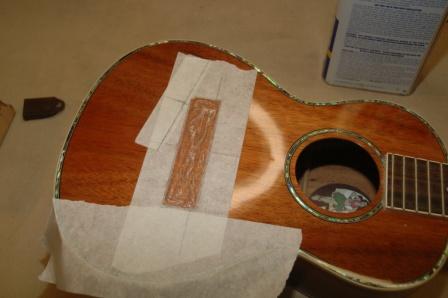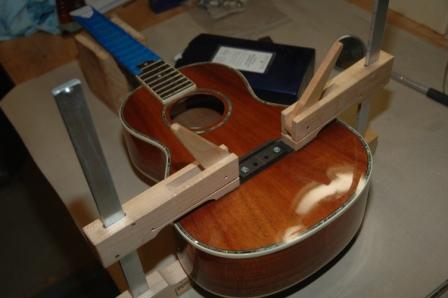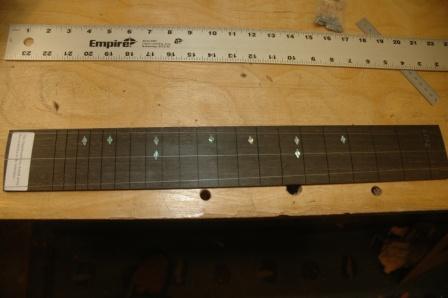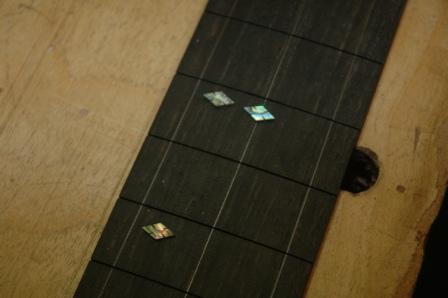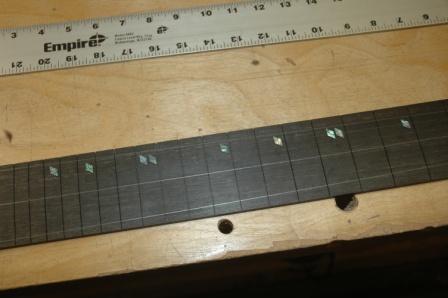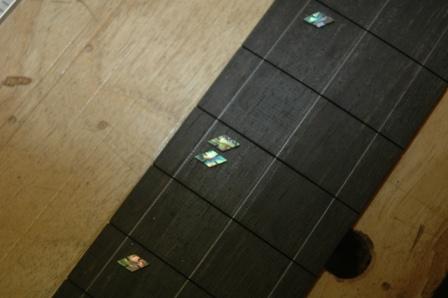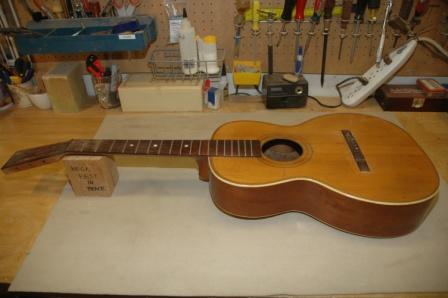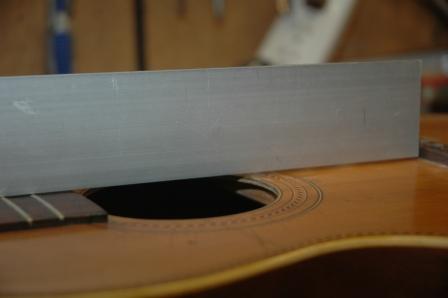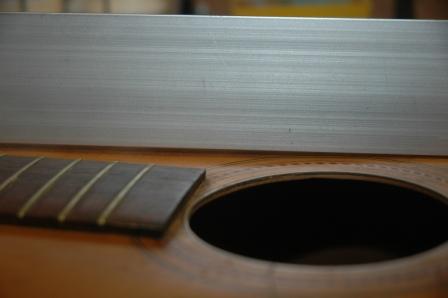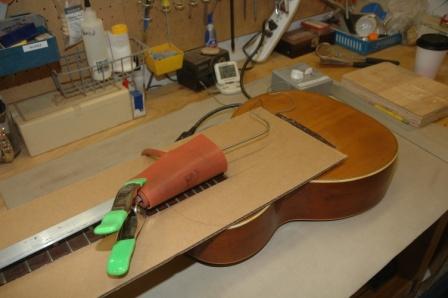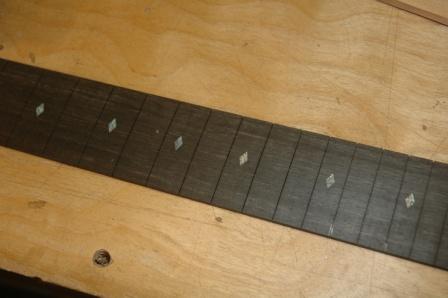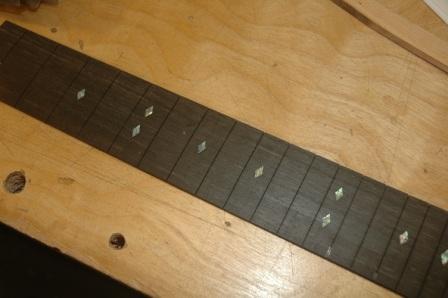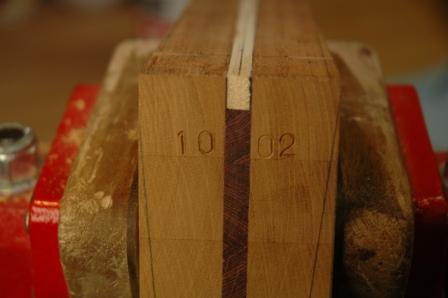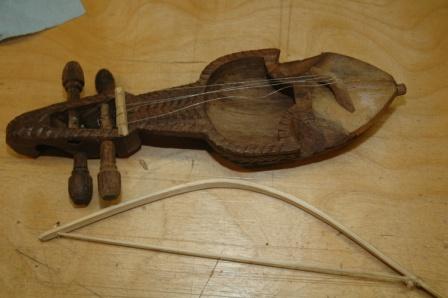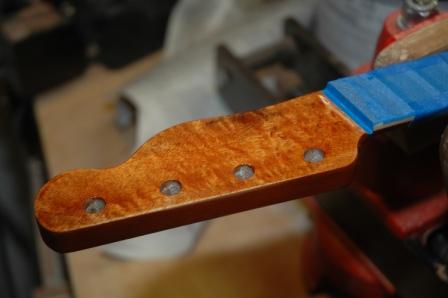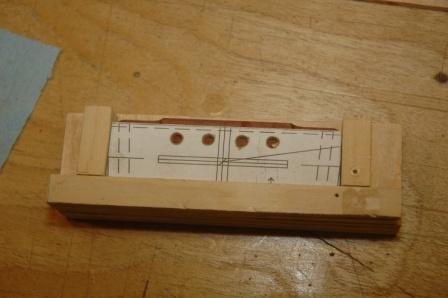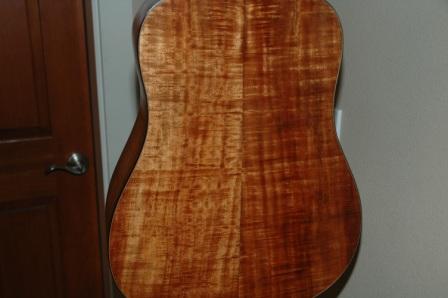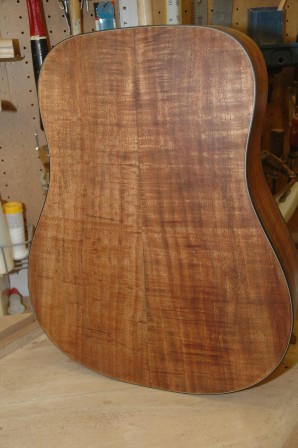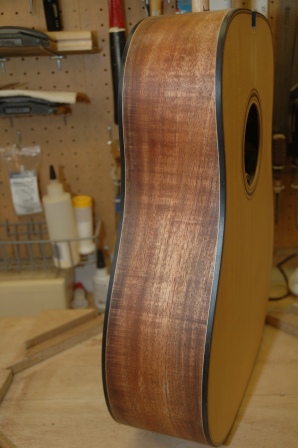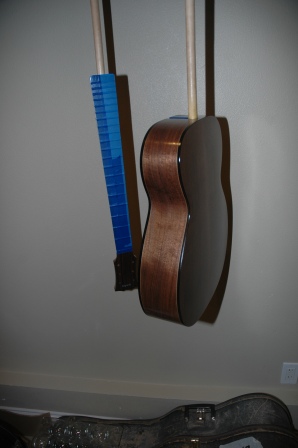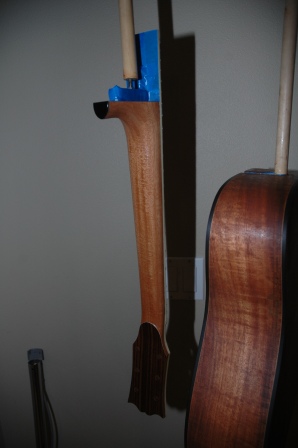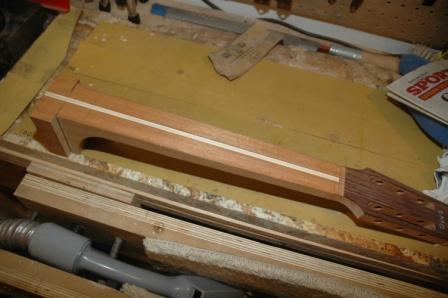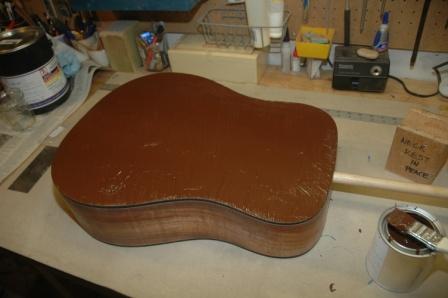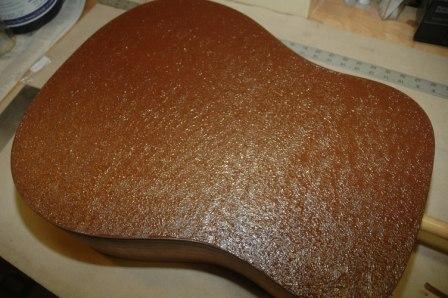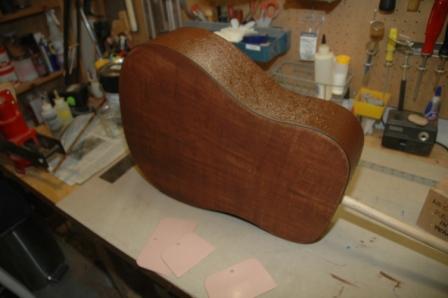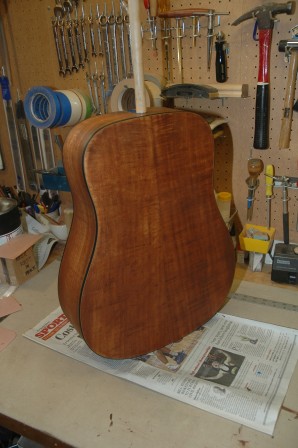March 11, 2011
I have applied the first coat sanding sealer to Guitar 1001 in preparation for pore filling. Today I will apply the pore filler first coat. For the uke and the OM Walnut under construction, I used Z-Poxy as the pore filler with results that were not fully to my liking. Although Z-Poxy is appropriate for pore filling, the application and knock down are difficult and time consuming. Hearkening back to my lazy disposition, and not enjoying the whole knock down process, I will use a more traditional pore filling product, Chemcraft Pore Filler from LMI.
I ordered a pint of Chemcraft, colored Medium Brown, appropriate for koa, and it arrived earlier this week. I have used Chemcraft on previous guitars with good results, but this time I’m determined to get exceptional results. I learned from my previous forays with Chemcraft that one application is not enough: the pores get semi-filled with one application, and two or more will be necessary to get mirror finish results (or full pore filling).
The online instructions from LMI are extensive for Chemcraft. To gather my thoughts, I’ll recap here for you instruction geeks, and to set a roadmap for my work today.
1. 1 coat of sanding sealer (lacquer), thin.
2. Apply with cheap bristle brush, across the grain. “Hide” the wood under the filler.
3. Blot or poke filler into pores with bristle brush at 90 degree angle.
4. Wait until 70% of shine is gone and filler hazes over. (Guess I’ll need my attenuated shine goggles for this measurement). Instructions say 5 to 20 minutes.
5. Remove excess with a squeegee into another jar (can be reused) at a 45 degree angle to the grain. I have some bondo squeegees that I’ll give a try. Some builders use old credit cards, etc.
6. Any thin layer of filler left behind after using the squeegee can be removed with burlap or sanding after 12 – 24 hours of drying time. Burlap can also be used 30 minutes after squeegeeing. Rub across the grain.
Proper application can result in a one coat only experience. If a second coat is necessary, it will be evident after sanding the dried pore filler.
